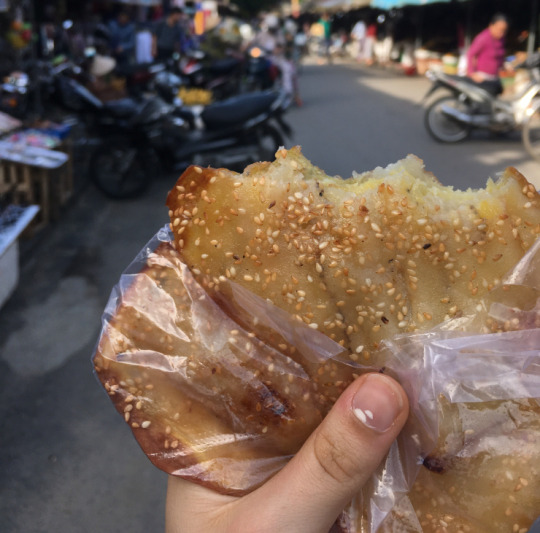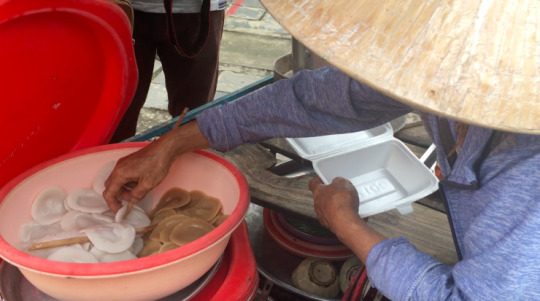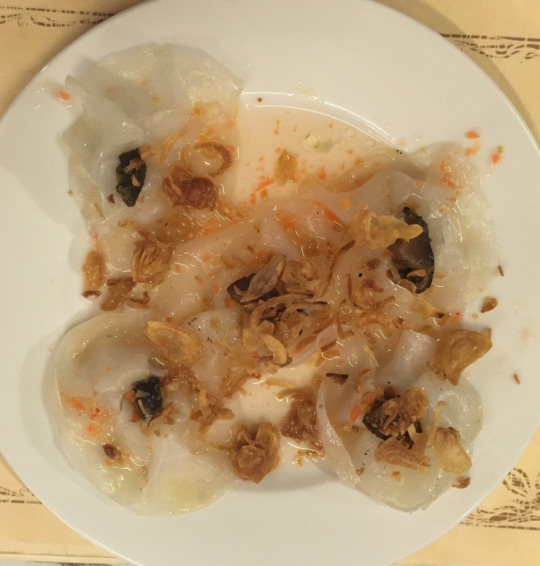#he gets to eat many delicous vegetables and rose gets bananas as a treat
Photo



recently got these little toys that remind me of ethan and rose... i could not help myself from drawing them as bunnies...! so cute!
#ethan winters#rose winters#rosemary winters#resident evil 8#re8#resident evil village#rebhfun#resident evil#resident evil fanart#they r just cute little bunnies to me#so cute....#im sorry ive been obsessed with bunnies recently#so why not force both of my obsessions together#ethan winters is a little bunny who gets to live in a burrow with his little baby daughter#he gets to eat many delicous vegetables and rose gets bananas as a treat#cat mia will come and visit every now and then...#grahhh i love bunnies#rose is so happy and full of joy she binkys every day
2K notes
·
View notes
Text
the lantern festival – december 12, 2017
Every full moon, the electricity shuts off in Hoi An. And lanterns light up the town. The crowds push and pull and the river lights up with fire.
People crowd the banks, old women and children selling paper lanterns to tourists and locals alike for 10,000 dong (22 cents). And lining the river are kids and couples and travelers using long poles to set their lit lanterns down the river, interspersed with locals selling sampan boat rides among the flames for 25,000 dong ($1).
All around me are humans, chattering and laughing, and buying and selling, and cooking and eating, (and struggling to take good photos in the low light of an electricity-less town).
setting their lantern in the river
a street food capital
Street food in Hoi An is cheap, distinctly authentic, and impossibly delicious. Everything you could hope for. After my first taste, I began planning my days around foods to try and where to find their stands, in order to fit every must-try treat into my cramped three days in the historical town.
Come nightfall, the Night Market bursts into life to the side of the river. With rows and rows of street food stands and trinkets, it wouldn’t be false to say the Night Market caters somewhat towards tourists, but I still wouldn’t miss it for the variety of street food stands in such proximity.
I’d been told by my multiple people before I went that I had to try the banana pancakes, but whenever I asked where to find them, I was just told “you will, don��t worry” with a laugh. And sure enough, the recommendation held true. Sold on every block (often multiple stands right next to each other), these crispy, gooey, fried sesame banana pancakes were far from disappointing.

Wandering around and looking for something to munch on, I found this corn cake vendor with the most amazing smell coming off her grill:

These “mango cakes” actually have nothing to do with mangos: lightly sweet rice dough encase a peanut filling.

Bánh Xoai (sweet rice dough filled with peanuts)
The most well-known bánh mì restaurant in Vietnam.

world famous Bánh Mì from Bánh Mì Phuong
Dau Phu: sweet dessert silken tofu, mixed with jellies and bean pastes. This is one of the cheapest street foods out there. But the sign was in Vietnamese. As I approached the woman however, she gestured to the third item on the menu with a questioning glance. Not knowing exactly what I was ordering, I smiled, nodded, and said cảm ơn chị.

Banh Beo (waterfern cake). This was one of the hardest to find, one of the ugliest dishes I got, but also one of the most delicious. I kept seeing the vendor when I wasn’t looking for her, but never when I was. Apparently banh beo is a very common Vietnamese food, but not very well known among tourists–not like the banana pancakes that were everywhere. Each region has their own special Banh Beo and I wan anxious to try the one in Hoi An. Finally, on my last day, I found her.

She seemed surprised to take my order, maybe because tourists don’t often feel inclined to try such an unattractive food. I’m so glad I did though. I watched as she popped open a styrofoam container and layered two different kinds of steamed rice dumplings filled with mung bean taste. After, she drizzled a savory (and slightly sweet) sauce over, topped with scallions, fried onions, roasted peanuts, and “ram giòn” (from dried and fried noodles). I put it delicately in my bike basket, and rode over to a nearby park to enjoy it. This dish was special for its use of all different textures and tastes–chewy savory rice dumplings, crispy onions, and lightly sweet creamy sauce.

Bánh tráng nướng stands, selling a sort of Vietnamese style pizza, were everywhere in the night market. I looked for one made to order, so I could avoid the shrimp traditionally put on top, and found it next to the river. It is a rice flour pancake, topped with garlic, chives, bean sprouts, fried onions, and two quail eggs, mixed together then set to grill for a few minutes. Then drizzled with sriracha and mayo. A merging of cuisines that couldn’t have been done better.
Tra Que Vegetable Village tour and biking by myself around the rice paddies
a historical town of mixed heritage
Hoi An is one of those towns that is proud of its dual culture. As Chinese refugees were granted asylum in the 17th century, they imparted their traditions, food, and architecture to the town itself. As the town became populated by refugees settling into Hoi An according to their home regions, it also became so populated with Assembly Halls for each expat community. These were a central part of life for the immigrants, where they would collects, have meetings, and preserve Chinese traditions. The old quarter is now dotted by these Chinese-style buildings–temples, Assembly Halls, and Old Houses.
traditional food (feat. cooking classes)
My airbnb offered homemade breakfast, so of course I took them up on it. After munching on the fruit du jour, and sipping traditional green tea (which they gave me a bag of on my way out), I could order a selection of traditional foods.
Dragonfruit and green tea for breakfast
banana pancake for breakfast
pineapple and green tea for breakfast
After tasting all the amazing street food, I decided to take a cooking class in Hoi An. And then, I liked the first one so much that I took a second one!
My first cooking class was at a vegetarian restaurant right next to the old town. We first took a bike tour to Tra Que vegetable village, where we picked up some fresh aromatics for the meal, and then to a couple different homes where they were making food to sell at the market. The first was a woman wrapping bánh it, rice dumplings with white bean paste inside.
bánh it (wrapped)
bánh it (unwrapped)
Next we visited a family making rice noodles from scratch.
making rice noodles
I forgot to take pictures of the food I made during my first cooking class, but here’s the food I made during my second one:
my homemade phở
my homemade salad
The traditional food of Hoi An seems always to be accompanied by a sense of uniqueness. Things you can only get here.
Xí Mà: Many of the online lists of specialty foods to try in Hoi An don’t include this one. I heard of it only from the local chef during my cooking class. He raved about the taste of this black sesame pudding, and emphasized that only one stand in all of Hoi An sells it. It is a secret recipe, made of black sesame, simmered for 3 hours, ground up with traditional Chinese medicine, and cooked with water from the Ba Le well. It’s a food created by the marrying of two cultures. Up until just a few months ago, it had been run for as long as anyone could remember by a 97 year old Mr. Thieu. Unfortunately since then, he’s had to hand the ladle to his granddaughter. The chef gave me an approximate location and the next day I set off on my bike to find it.
I was riding on winding paths through a neighborhood, and I stopped for a minute to consult my map. I heard a door opening in front of me, and looked up to see a friendly-looking man in his late 60s. He approached me and not unkindly asked where I was from. My heart started racing. Hoi An, right next to Da Nang, has a lot of history with America. Nevertheless, I told him the truth and watched carefully for his body language. He then asked: “did your grandfather fight in the war?”. Playing it safe, I said I didn’t know. He smiled and motioned to a big ring on his left hand.
“I fought with the Americans,” he smiled as he gave me a closer look at his ring. It was a big green stone, encircled with the words “United States of America”. He asked me where I was going, and once I told him, he told me to wait a minute, disappeared inside and reappeared with a bike. Kindly, he said he’d show me the way.
Less than five minutes later, we were there. As I parked my bike and thanked him, he waved and rode back.
So I settled down on one of the plastic pink 6 inch stools and asked for a bowl of the sweet sesame pudding.
Xì Má
black sesame pudding
Warm, thick, rich, lightly sweet, and full of flavor, I couldn’t have been disappointed. After scraping my second bowl clean, I rose and thanked her.
White Rose: Like Xì Má, White Rose has a story and a three-generation-old secret recipe to go along with it. Only one family in all of Hoi An makes the White Rose dumpling wrappers, unusual for their thinness, texture, and flavor. Legend is that one man started making them for his family dinners, but they became so well-known that he began selling them to his neighbors. As demand grew, so did his business. This family now makes all the dumplings and sends them to every other restaurant that sells the famous white rose. I had this dish at the same restaurant as my cooking class and it did not disappoint.

Cao Lau Noodles:
Cao Lau noodles is another of those dishes born from a mix of different cultural influences, and that can only be made locally. The noodles are particular, very chewy and thick, and the water used must be from the Ba Le well on the island next to the town. Along the same lines, the rice flour must be very fresh and local and mixed with ash from certain local trees from the island, before cooked. The substantial noodle is topped with pork (I couldn’t find a vegetarian version of this dish), tossed with a very small amount of broth, cilantro, bean sprouts, lettuce, and crispy “croutons”.
I found a seat at a stand on the bank of the river on one bustling night, and settled down to enjoy.
parting gifts
My airbnb host in Hoi An could not have been sweeter. She have me maps and recommendations and tips, not to mention amazing towel animals.
Plus, at the end of my trip, she sent me off with some of their amazing loose leaf traditional green tea, and a water bottle for the plane.
Hoi An: legends of food the lantern festival - december 12, 2017 Every full moon, the electricity shuts off in Hoi An.
0 notes